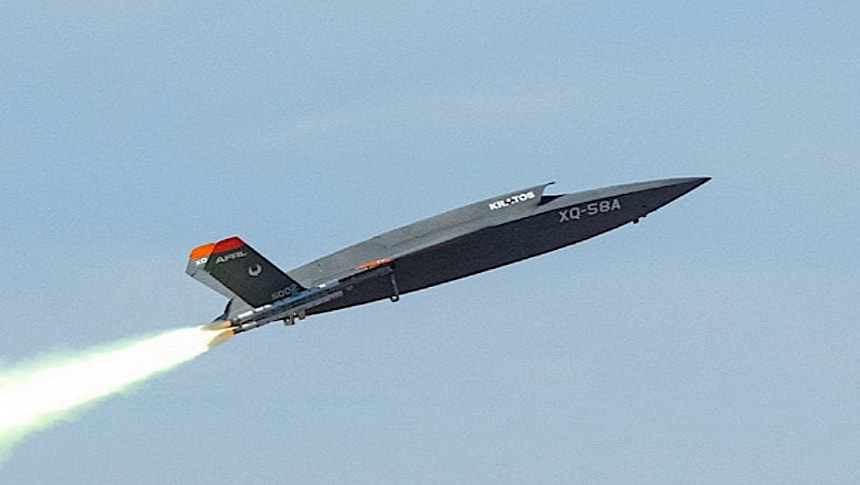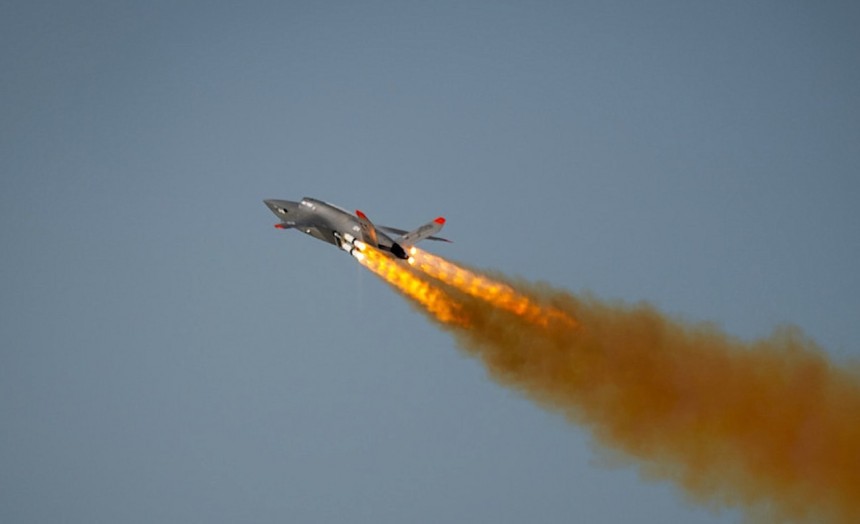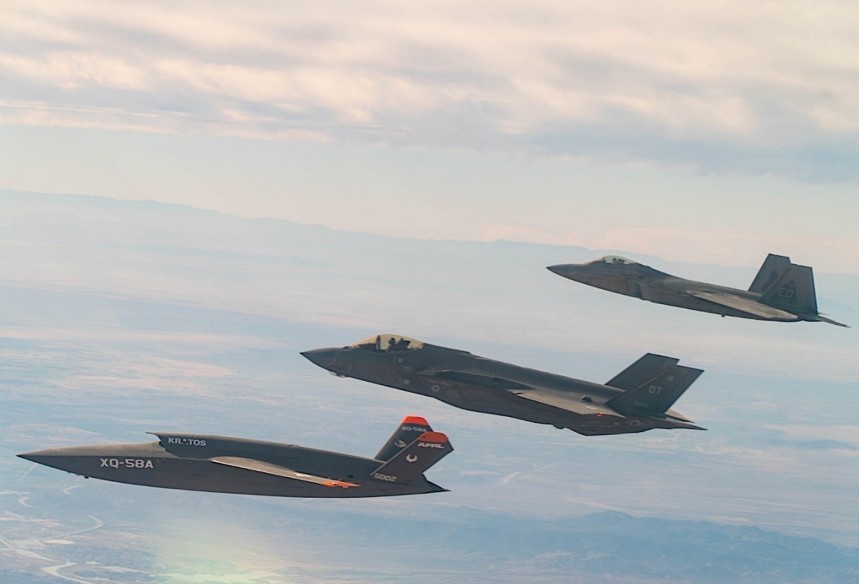I'm not sure how many of you have heard about something called Hivemind, but if things keep going at this rate, chances are pretty much everyone in this world will know what that is.
Hivemind is an AI. Not the kind of AI people use to fake videos or generate unlikely responses to queries, but the kind of AI that can pilot drones and fighter jets better than any human Top Gun.
The software is the work of a defense startup called Shield AI. It was purpose-built to power and control any kind of military hardware, including aircraft, drones, ships, satellites and submarines.
What makes this system special is the fact that it needs absolutely no human control to work and make decisions. It also has no need for GPS to find its way to the target and does not wish or require communication with a ground station or controller.
That's because once integrated with an aircraft, Hivemind uses the onboard sensors to create a map of its surroundings and then flies based on that to reach its target and perform the assigned task.
The AI does not need precise instructions or prior knowledge on how to fulfill a mission, but can adapt to surroundings and events to decide on the best course of action.
All of the above sounds quite extraordinary, and because Shield AI does not reveals exactly how that works, kind of spooky too. You might even be inclined to believe that such a thing can't be real – but you'd be wrong.
Although Shield AI was only founded in 2015, it already works together with the American military and other private defense players to advance its goals.
The Hivemind system has already been flown on three different quadcopters, a reconnaissance drone called MQ-35A V-BAT, and even an F-16.
When it comes to the fighter jet, the AI was not actually given control of a real-life airplane, but it was put in charge of a simulated one. Active-duty USAF and Navy pilots were tasked with flying simulated jets against the Hivemind, and see how it would perform. It seems the AI ruled the virtual sky, as the human pilots were defeated in 99 percent of the simulated dogfights (we're not told how many there were).
Last time we heard of this AI was earlier in March, when we learned of it getting ready for integration with a U.S. Navy sub-sonic aerial target called BQM-177A. Made by defense contractor Kratos, the drone is used by the Navy to simulate air-to-air engagements.
Work on that integration is not yet over, but in the meantime a new development on the Hivemind front came to our attention: the AI flew and controlled another breed of aerial target, the MQM-178 Firejet.
Also made by Kratos, this system is meant to be used as either a jet-powered target during training or weapons testing, or it can be used as a tactical aircraft to support surface-to-air and air-to-air engagements. We're not told the exact profile of the AI-driven mission, other than the flight was successful.
You may be wondering why Hivemind is mostly used on Kratos drones. The answer to that is simple: all of the above is technically just training for the real test for the AI, its integration with the XQ-58 Valkyrie.
That would be a jet aircraft-like stealth drone whose main role will be to support the operation of piloted fighters like the F-22 and F-35, including by performing strikes on enemy targets.
As announced since the summer of last year, the Valkyrie will be fitted with the Hivemind in an attempt to make the drone invulnerable to electronic warfare – as stated earlier, the AI doesn't need GPS and communications to perform its work.
The Valkyrie will be capable of flying at speeds of 652 mph (1,050 kph) and for distances as large as 2,449 miles (3,941 km). It will be capable of carrying a variety of payloads, including weapons the likes of Joint Direct Attack Munition (JDAM) and small-diameter bombs.
The tests now being performed on other Kratos drones are meant to inform the integration of the Hivemind into the Valkyrie. As per the details provided by Shield AI, the first flight of the drone in this configuration is expected to take place later this year.
Using computer programs instead of pilots, even in uncrewed drones, comes with a series of advantages. The most important is, of course, freedom from the physical limits of humans, much faster decision-making, and increased mission efficiency.
So confident are the Shield AI higher-ups in what they're doing that the company's president, Brandon Tseng, says AI pilots "will have a larger global impact than self-driving cars." That remains to be seen. Until then, we're now left with the thought that an AI is actively training to fly aircraft. Write your way around that, ChatGPT!
The software is the work of a defense startup called Shield AI. It was purpose-built to power and control any kind of military hardware, including aircraft, drones, ships, satellites and submarines.
What makes this system special is the fact that it needs absolutely no human control to work and make decisions. It also has no need for GPS to find its way to the target and does not wish or require communication with a ground station or controller.
That's because once integrated with an aircraft, Hivemind uses the onboard sensors to create a map of its surroundings and then flies based on that to reach its target and perform the assigned task.
The AI does not need precise instructions or prior knowledge on how to fulfill a mission, but can adapt to surroundings and events to decide on the best course of action.
All of the above sounds quite extraordinary, and because Shield AI does not reveals exactly how that works, kind of spooky too. You might even be inclined to believe that such a thing can't be real – but you'd be wrong.
The Hivemind system has already been flown on three different quadcopters, a reconnaissance drone called MQ-35A V-BAT, and even an F-16.
When it comes to the fighter jet, the AI was not actually given control of a real-life airplane, but it was put in charge of a simulated one. Active-duty USAF and Navy pilots were tasked with flying simulated jets against the Hivemind, and see how it would perform. It seems the AI ruled the virtual sky, as the human pilots were defeated in 99 percent of the simulated dogfights (we're not told how many there were).
Last time we heard of this AI was earlier in March, when we learned of it getting ready for integration with a U.S. Navy sub-sonic aerial target called BQM-177A. Made by defense contractor Kratos, the drone is used by the Navy to simulate air-to-air engagements.
Work on that integration is not yet over, but in the meantime a new development on the Hivemind front came to our attention: the AI flew and controlled another breed of aerial target, the MQM-178 Firejet.
Also made by Kratos, this system is meant to be used as either a jet-powered target during training or weapons testing, or it can be used as a tactical aircraft to support surface-to-air and air-to-air engagements. We're not told the exact profile of the AI-driven mission, other than the flight was successful.
That would be a jet aircraft-like stealth drone whose main role will be to support the operation of piloted fighters like the F-22 and F-35, including by performing strikes on enemy targets.
As announced since the summer of last year, the Valkyrie will be fitted with the Hivemind in an attempt to make the drone invulnerable to electronic warfare – as stated earlier, the AI doesn't need GPS and communications to perform its work.
The Valkyrie will be capable of flying at speeds of 652 mph (1,050 kph) and for distances as large as 2,449 miles (3,941 km). It will be capable of carrying a variety of payloads, including weapons the likes of Joint Direct Attack Munition (JDAM) and small-diameter bombs.
The tests now being performed on other Kratos drones are meant to inform the integration of the Hivemind into the Valkyrie. As per the details provided by Shield AI, the first flight of the drone in this configuration is expected to take place later this year.
Using computer programs instead of pilots, even in uncrewed drones, comes with a series of advantages. The most important is, of course, freedom from the physical limits of humans, much faster decision-making, and increased mission efficiency.
So confident are the Shield AI higher-ups in what they're doing that the company's president, Brandon Tseng, says AI pilots "will have a larger global impact than self-driving cars." That remains to be seen. Until then, we're now left with the thought that an AI is actively training to fly aircraft. Write your way around that, ChatGPT!











